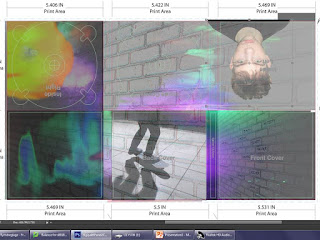When producing a music video, one must remember that not all file formats are supported on all computers. This is especially an issue for me as I am working between Windows and Mac hardware, therefore the software available to both is different. I have to be aware of these different file types in order to produce my work. This awareness means that I can work systematically.
Before I did my first filming shoot, I was not aware that this was such an issue. Avoiding using certain cameras will reduce my work load as I will not have to convert any files into Mp4s. This means I can concentrate on the editing of the video, which needs to be precise in order to be effective as a promotional film.
The following list shows popular cameras that have a tenancy to produce .MTS files. These are the cameras that I will avoid using when filming the other parts to my video.
SONY
•HDR-PJ540/B 2014 new avchd mts camcorder
•HDR-PJ340/B
•HDR-CX240/L
•HDR-PJ275/B
•HDR-PJ810/B
•HDR-CX330/B
•HDR-CX900/B
•HDR-AX2000/H MPEG-4AVC/H.264(AVCHD)SD:MPEG-2PS
• HDR-UX1 (DVD), HDR-UX3/UX5 (DVD), HDR-UX7 (DVD)
• HDR-SR1 (30 GB HDD)
• HDR-SR5 (40 GB HDD), HDR-SR7 (60 GB HDD)
• HDR-SR5C (100 GB HDD), HDR-SR8 (100 GB HDD)
• HDR-CX7 (Memory Stick Duo)
• HDR-SR10 (40GB HDD, Memory Stick), HDR-SR11 (60 GB HDD, Memory Stick), HDR-SR12 (120 GB HDD, Memory Stick)
• HDR-TG1/TG3/TG7 (Memory Stick Duo) • HDR-CX12 (Memory Stick Duo)
• HDR-CX100 (8 GB HDD, Memory Stick Duo)
• HDR-XR520V (240 GB HDD), HDR-XR500V (120 GB HDD Version)
• HDR-XR200V (120 GB HDD)
• HDR-XR200VE (120 GB HDD + GPS)
• HDR-XR100 (80 GB HDD)
• HDR-CX500E, HDR-CX520E
• HDR-CX105 (8GB Memory Stick Duo)
• HXR-NX5, HDR-AX2000.[73] • HDR-XR550 (240 GB HDD)
• Sony NEX-5, NEX-5C (without Eye-Fi support), of both models, variants with AVCHD 1080 50i and AVCHD 1080 60i only exist
• Sony HXR-MC50E.[74]
• Sony NEX-FS100
• NEX-VG20
• Sony SLT-A65, Sony SLT-A77V, Sony NEX-5N, Sony NEX-7
• Sony DSC-HX5V (GPS+COMPASS), HX5V-E (European version, limited to 30 minutes recording due to European specific taxes)
• Sony DSC-HX9V (GPS+COMPASS), HX9V-E (European version, limited to 30 minutes recording due to European specific taxes)
• Sony HX10V, Sony HX20V, Sony DSC-RX100
• Sony DSC-RX100 II
CANNON
•LEGRIA mini X, LEGRIA HFR56/HF R506 2014
•VIXIA R500/R50/R52 2014
•XA25, XA20
• HR10 (DVD) • 2007: HG10 (40 GB HDD)
• HF10 (SDHC, built-in 16 GB flash memory), HF100 (SDHC)
• HF11 (SDHC, built-in 32 GB flash memory), HG20 (60 GB HDD, SDHC), HG21 (120 GB HDD, SDHC)
• HF S10 (SDHC, built-in 32 GB flash memory), HF S100 (SDHC), HF20 (SDHC, built-in 32 GB flash memory), HF200 (SDHC)
• HF S11 (SDHC, built-in 64 GB flash memory, wired LANC remote capability)
• HF S21 (two SDHC slots, 64 GB flash memory, electronic viewfinder), HF S20 (two SDHC slots, 32 GB flash memory),[57] HF S200 (two SDHC slots); HF M31 (SDHC, 32 GB flash memory), HF M30 (SDHC, 8 GB flash memory), HF M300 (SDHC); HF R11 (32 GB flash memory), HF R10 (SDHC, 8 GB flash memory), HF R100 (SDHC)
• HF G10 (with 1⁄3 inch image sensor)
• HF M500 (with 1⁄3 inch image sensor; 24pf, 30pf, and 60i; removable SDHC/SDXC flash memory)
PANASONIC
HC-MDH2GK-K AVCHD
• HC-X920MGK ( [AVCHD] AVCHD 3D MTS / Progressive[iFrame] MP4)
• HDC-DX1 (DVD), HDC-SD1 (SDHC)
• HDC-SD3 (SDHC, available in Japan only)
• AG-HSC1U - essentially a rebadged HDC-HC1 (SDHC, comes with portable 40 GB HDD storage)
• HDC-SD5 (SDHC), HDC-SX5 (DVD, SDHC), HDC-SD7 (SDHC)
• HDC-SD9 (SDHC), HDC-HS9 (60 GB HDD, SDHC)
• AG-HMC70 (SDHC)
• HDC-SD100 (SDHC), HDC-HS100 (60 GB HDD, SDHC)
• AG-HMC150 (SDHC)
• HDC-HS300 (120 GB HDD), HDC-HS200 (80 GB HDD), HDC-TM300 (32 GB built-in flash memory, SDHC), HDC-SD300 (SDHC, available in Europe only), HDC-SD200 (SDHC).
• HDC-TM30/HDC-TM10 (32 GB built-in flash memory, SDHC), HDC-SD10 (SDHC)
• HDC-TM350 (64 GB built-in flash memory, SDHC, available in Japan and as of October 2009, from Panasonic Stores across the UK)
• AG-HMC40 (SDHC)
• HDC-TM700/HDC-SD700/HDC-HS700 (introduced 1080p60/1080p50 modes, depending on region)
• HDC-SD60/HDC-TM60/HDC-HS60
• AG-AF100/AG-AF101/AG-AF102 (4/3" large sensor camera)
• AG-AC130/AG-AC160 (SDXC/SDHC/SD)
• DMC-ZS3/TZ7*, DMC-TS1/DMC-FT1* (AVCHD Lite)
• DMC-GH1 (AVCHD) • Lumix DMC-ZS7/TZ10*, DMC-G2 (AVCHD lite)
• Lumix DMC-GH2, DMC-GF2 (AVCHD)
• Lumix DMC-ZS10/TZ20* (AVCHD lite)
• Lumix DMC-FX77/FX78*, DMC-TS3*, DMC-FZ45/47/48*
• Lumix DMC-GF2, DMC-G3/GF3 (AVCHD)
• Lumix DMC-TZ30 (AVCHD, AVCHD Progressive: GPH, PSH)
• Lumix DMC-G5 • Lumix DMC-FZ200
• Lumix DMC-GH3 with a bit rate of 28 Megabit per second (AVCHD 2.0)
• Panasonic Lumix DMC-LX7
After completing my second filming shoot, I uploaded the files straight from the camera, directly into imovie. This helps to maintain video crispness; ensuring it is as HD as possible, heightening the overall quality of the video and adding an aspect of professionalism.































